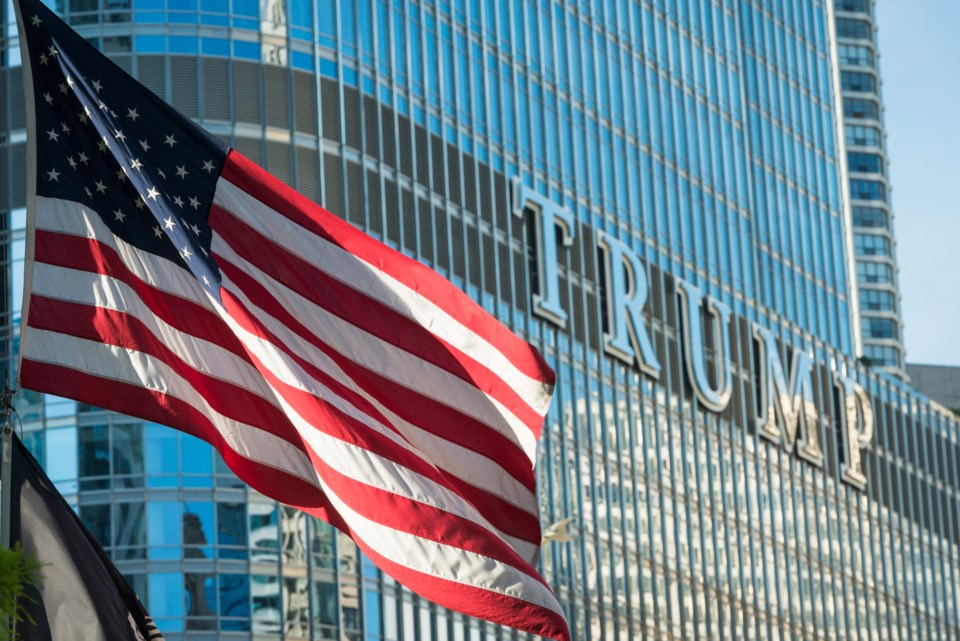Since his re-election, Donald Trump has drawn plenty of attention for propositions made on social media about the Panama Canal, Greenland and Canada — including . A day later, he threatened to use ” to make Canada the 51st American state.
For a supposed , it’s odd that Trump is enthusiastically embracing ideas from the era of .
Maybe that’s what Trump is going for. Perhaps he is trying to revive of , and .
Canadians who paid attention to their history lessons will sense some neo-Polkism in these designs — a “” call for the 21st century.
Mild responses
Not surprisingly, Trump’s annexation propositions have from the leaders of Panama, Greenland and Canada, some more forcefully than others. Canada’s response has been mild at best.
, the man Trump now as the governor of America’s 51st state, in which an avuncular Tom Brokaw explains Canada to Americans.
Trudeau and Canada’s cabinet ministers have also with the president-elect at his Mar-a-Lago estate in Florida to find away around Trump’s ruinous tariff threats, a far greater threat to Canada’s national interests than his annexation bluster.
Some Canadians may have of the United States but are interested in Canada becoming a 51st state.
Still, let’s play out Trump’s hypothetical. Let’s say that Canada became the 51st state in the American union. What would be the electoral implications for the U.S.?
Democrats would benefit
Trump and his Republican Party would certainly not like the answer: the GOP might never win a national election ever again. Indeed, the “state of Canada” would profoundly alter the electoral map of American national politics, almost entirely in the Democratic Party’s favour.
To see how, consider how the 51st state would be represented in the institutions of American government.
Let’s begin in the House of Representatives because that’s where integrating Canada would be the trickiest. In the U.S., House seats are allocated on the basis of representation-by-population, which, based on the , means one House seat for every 761,169 people.
With its population of 41 million, Canada would be apportioned about 54 seats, becoming a bigger state than California. Combine those 54 House seats with the two senators allocated to every state, and you would have an electoral powerhouse north of the 49th parallel. None of this would be good news for Republicans.
Of course, this assumes that annexation can overcome over reapportionment and redistricting, and that Canada would accept the American for allocating seats that would whittle 338 House of Commons seats down to 54 and its 105 senators down to two. But no matter.
Most Canadians would vote Democrat
Let’s look now at how Canadians would alter American elections. Grafting Canada’s political culture onto U.S. party politics would be awkward, so let’s make another assumption. Presume that Conservative Party of Canada voters would vote Republican and left-of-Conservative voters would vote for Democrats.
Generally, this would include supporters of the Liberals, New Democrats, Greens and the Bloc Québécois.
Here’s where the 51st state becomes a big problem for Trump. Since Canada’s right-wing parties , the Conservative Party of Canada has won an average of 35 per cent of the popular vote. Canada’s left-of-Conservative parties, on the other hand, have won an average of 63 per cent of the vote in that time period.
In American terms, that means about two-thirds of voters in the state of Canada would vote Democrat and one third would vote Republican, or 36-18 in the Democrats’ favour.
Looking back over the past quarter century, that margin would have turned into a Democratic majority (except for 2010). Indeed, left-of-Conservative voters in the state of Canada would make it far more difficult for Republicans to win a House majority ever again.
In the Senate, the two-thirds of Canada’s left-of-Conservative voters would likely send a pair of Democrats to the Senate. That’s not enough to alter the balance of power, but in a world of single-digit margins of victory in the Senate, it’s not trivial. After all, every senator counts, especially for things like and cabinet confirmations.
Canadianizing the Electoral College
Now comes the big question: how would the state of Canada alter the Electoral College?
Each state has Electoral College votes that of their House representatives and senators. We also know () that the winner of the popular vote in each state takes all of that state’s the Electoral College votes. Where would the state of Canada’s 54 Electoral College votes go?
Given Canada’s left-of-Conservative leanings, the state of Canada’s Electoral College votes would likely go to the Democrat presidential candidate every time. That would have swung two Republican presidential victories in the Democrats’ favour (2000 and 2004) and would have made Trump’s victories in 2016 and 2024 even smaller — so small, in fact, that American electoral math in the expanded U.S. would be fundamentally changed.
So perhaps it’s time for Trump to recognize that Canada is a different country with its own history and political culture. Better yet, Trump could recognize that his churlish taunts trivialize a needless trade war that risks on both sides of the border.
Trump could recognize that the countries he is antagonizing are part of a strategic network of allies that sustains American power in the world. If that’s not enough for Trump to act seriously, he could at least follow his electoral instincts.
Aaron Ettinger does not work for, consult, own shares in or receive funding from any company or organization that would benefit from this article, and has disclosed no relevant affiliations beyond their academic appointment.




